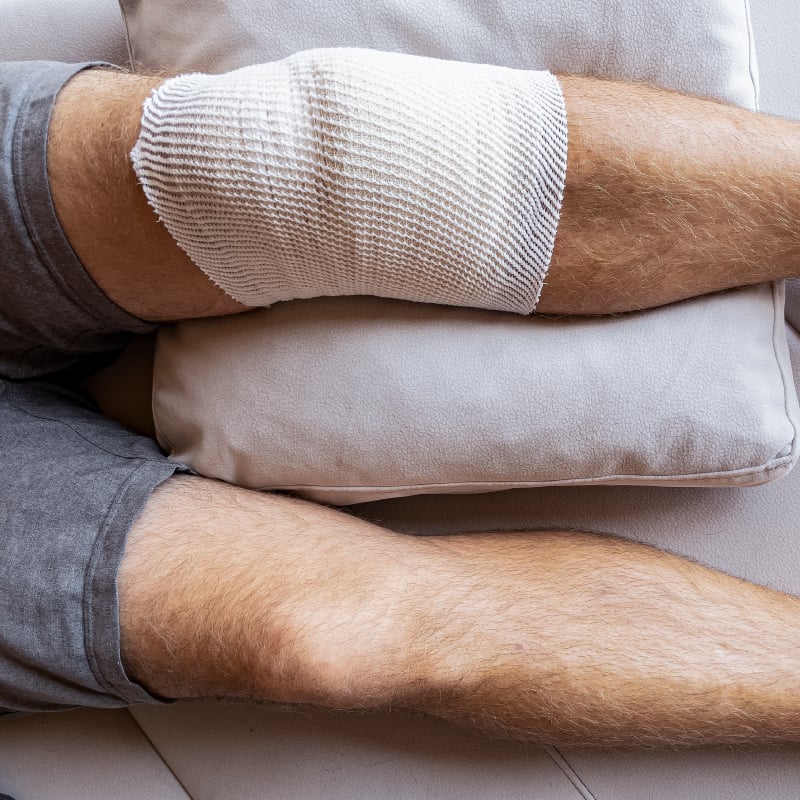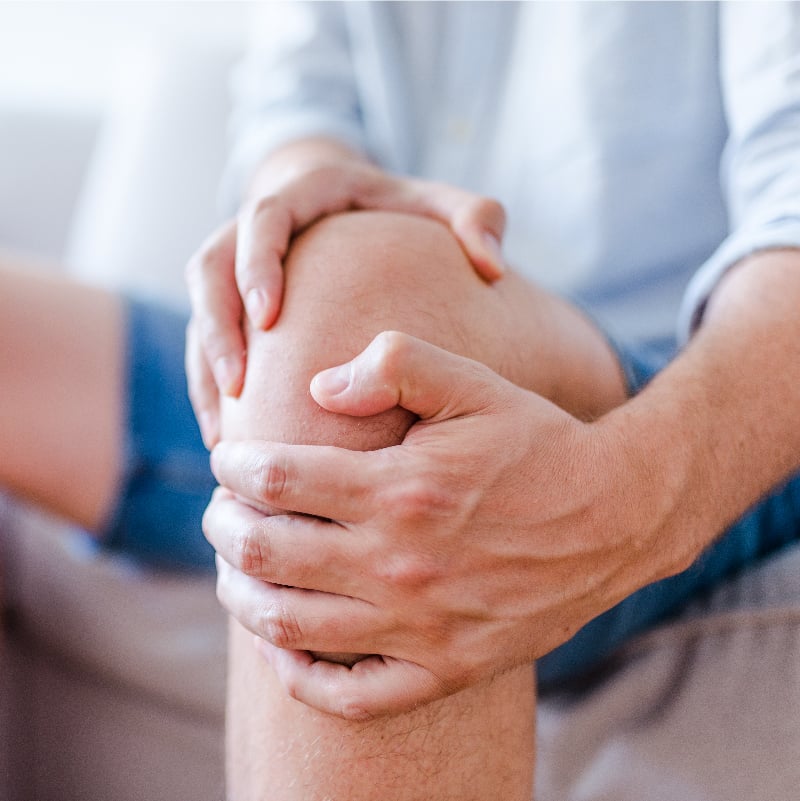More than 50 percent of U.S. adults over the age of 65 have clinical signs of arthritis - a term that encompasses nearly 100 different forms of the disease. The number of patients suffering from one form or another is expected to nearly double by the year 2030. It comes as no surprise that many orthopaedic patients suffer from degenerative arthritis, often in the form of osteoarthritis, and trust Rochester Regional Health doctors for care and management.
Osteoarthritis is a degenerative joint disease where the protective cartilage between two bones breaks down. When this happens, the two bones rub together which can cause a number of issues including pain, stiffness, and swelling. Osteoarthritis is often found in weight-bearing joints such as hips, knees, ankles, and the spine.
There are several methods that can help manage the disease once an individual is diagnosed. Pain, stiffness, and swelling can be managed with medication and therapy. Other factors, such as maintaining (or reaching) a healthy weight and getting enough exercise, can also help manage osteoarthritis symptoms while improving joint mobility and flexibility. Primarily, the doctors at Rochester Regional Health will work individually with patients to create unique care plans that address each person's particular form of osteoarthritis, which could include, but are not limited, to the following:
Common Medication Treatments
NSAIDs (Non-Steroidal Anti-Inflammatory Drugs)
These drugs - available both over the counter and by prescription - reduce swelling caused by inflammation. Arguably they are the most commonly used drugs to treat osteoarthritis symptoms; however they must be used with caution. While they reduce inflammation, NSAIDs do nothing to slow or alter the disease and side effects could include gastrointestinal distress, allergic reactions, and in some prescription drug cases, contribute to possible birth defects.
Common Over the Counter NSAIDs: Naproxen (Aleve, Midol), Ibuprofen (Advil, Motrin), and others.
Common Prescription NSAIDs: Meloxicam (Mobic), Oxaprozin (Daypro), Celecoxib (Celebrex), and more.
Analgesics
Also available by prescription and over the counter, these drugs are typically strict pain killers. Analgesics help manage the pain often experienced by arthritis, but they do nothing to stop or reverse the progression of the disease. While analgesics are often the next most common method of pain management behind NSAIDs, doctors approach them with caution because of the possibility of patient abuse and addiction. For that reason, it's important to have open communication with your doctor regarding how well these drugs are working for your symptoms.
Common Over the Counter Analgesics: Acetaminophen (Tylenol, some Excedrins)
Common Prescription Analgesics: Vicodin, Percocet, and more.
Corticosteroids
These steroids have powerful anti-inflammatory properties that may help reduce swelling in problem areas. Corticosteroids are synthetic versions of naturally produced human hormones; however, serious side effects could arise that include, but are not limited to: high blood pressure, weight gain, and increased risk of infection. Therefore, it's important a patient and doctor discuss whether or not this treatment is the right option for his or her particular situation.
Common Prescription Corticosteroids: Prednisone, methylprednisolone, and prescription strength hydrocortisone
DMARDs (Disease-Modifying Antirheumatic Drugs)
Originally only used for the most severe arthritis cases, studies now show that DMARDS can delay the long-term damage caused by degenerative joint disease. While most DMARDS are effective, they also run the risk of some very serious side effects that should be discussed with your doctor.
Common Prescription DMARDs: Methotrexate, Sulfasalazine, Etanercept (enbrel), and more.
There are additional medications for pain management that could be discussed with the doctors at Rochester Regional Health if any of these treatments have not worked out for you in the past.
Common injections
Corticosteroids can be injected into arthritic joints and relieve the pain associated with inflammation within the joint. This can be associated with long term relief but is not right for everyone. As well, Hyaluronic acids (Synvisc or Hyalgan) can be injected. In this procedure, a gel-like fluid is injected into the knee joint and may take 1 -3 injections over several weeks.
Both of these procedures have risks and benefits and could be discussed with the physicians at Rochester Regional Health. In this procedure, a gel-like fluid called hyaluronic acid is injected into the knee joint.
Other methods are available to treat joint pain that could be explored. Complementary and Alternative Medicine (CAM) are additional therapy plans for those who like to embrace alternative medicine. CAM therapies for arthritis can include Acupuncture/Acupressure, Aromatherapy, Herb application, Homeopathy, Hydrotherapy, Reflexology, Polarity therapy, Reiki and touch therapy. Because alternative medicine therapies are not standardized or regulated, it's important to be aware of your own diagnosis as well as the reputation, credentials, and certifications of the therapist assisting you. Diligently research all methods you might be considering and discuss these treatments with your assigned physician, fully understanding any possible negative side effects that could occur through your chosen therapy. Also, find out the financial commitment required by an additional therapy, as most CAM therapies are not covered by insurance.
For those who cope with the daily effects of degenerative arthritis, the physicians at Rochester Regional Health can offer the expertise of an individualized treatment plan for you, be it conservative therapies or surgical treatments, or a combination of the two. There is a treatment plan that is right for you, and we'll help you find it.









